 Path: Travel > Travel > Destinations > Cyprus 2005 > St Hilarion
Path: Travel > Travel > Destinations > Cyprus 2005 > St Hilarion
St Hilarion
- This is the castle of St Hilarion, on its hillock. The name-giver was a saint from Palestine; he fled to Cyprus in the 7th century and seems to have founded a small monastery here. The Byzantines came later and saw that the place could also accommodate a fort, so they built one. This in turn fell in 1191 when Richard the Lionheart had nothing better to do and so snatched the island from Isaac Komnenus, enroute to the Holy Land.
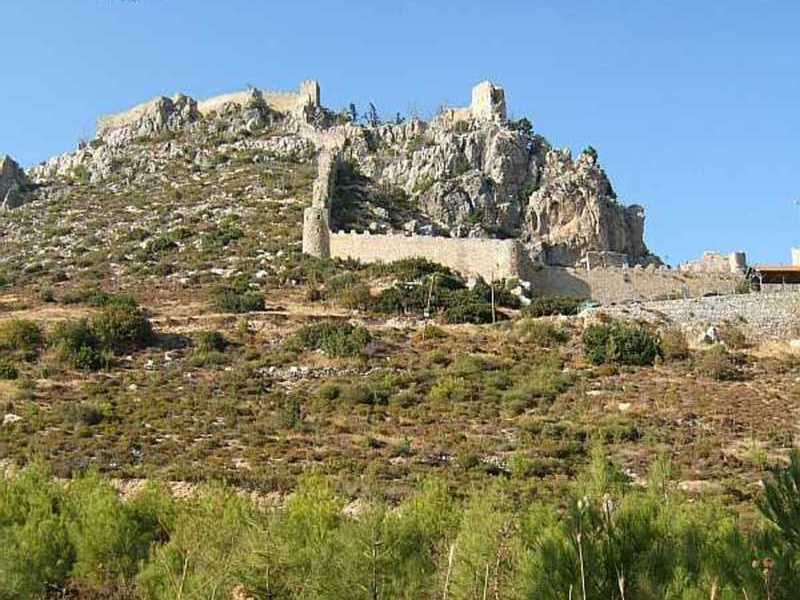
- A small Byzantine church inside the castle. The style, especially the alternating bands of stone and brick, is rather typical for Byzantine buildings: we saw similar ruins in Jordan and Syria.
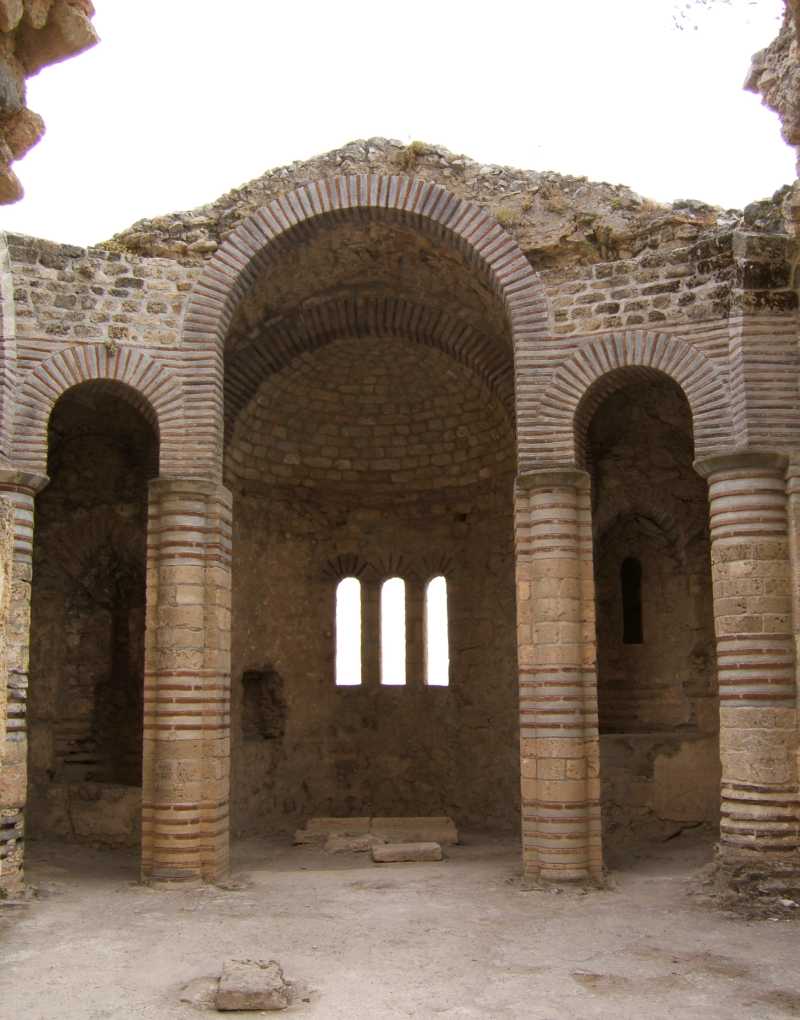
- A view from the middle part of the castle down to the entrance. The Turkish flags on the tower are not visible from southern Cyprus: that probably explains their relative modesty.
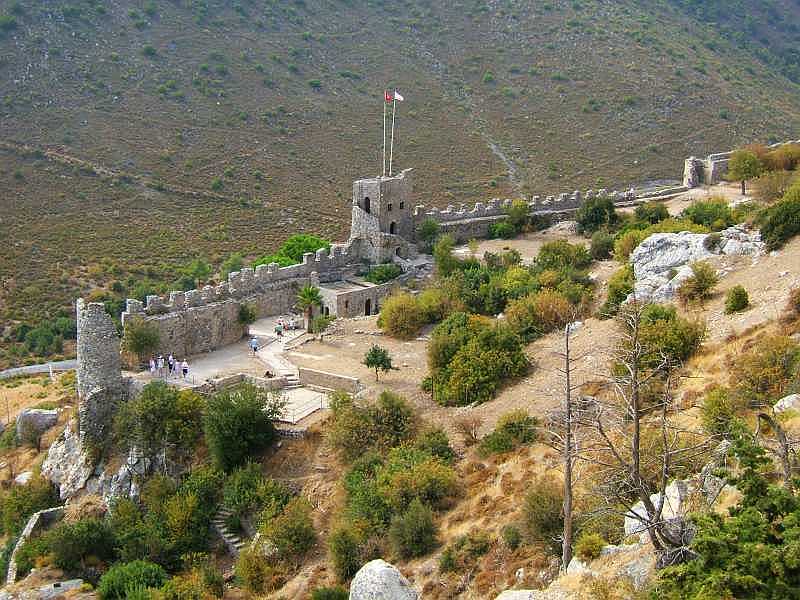
- The famous Queen's window, in the upper part of the castle. Nice views but probably rather cold in winter. Most of the buildings up there are destroyed, only a few walls with gaping holes are still standing. This window is almost the only decorative element left.
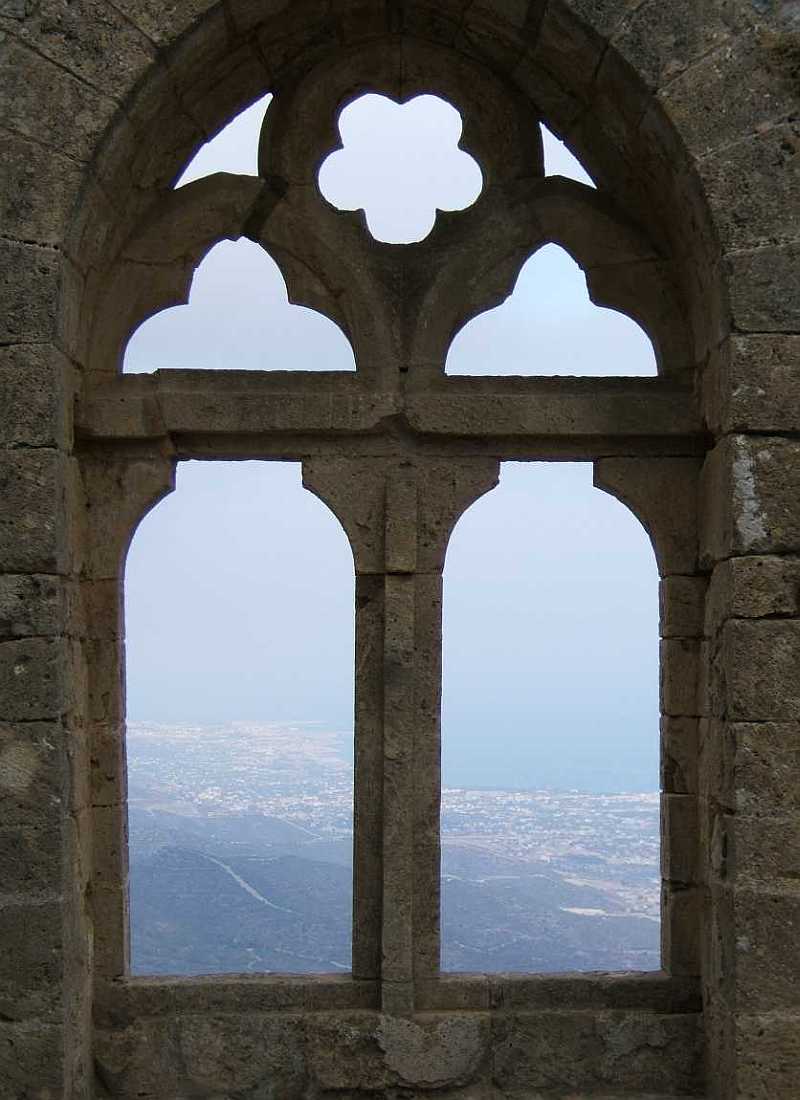
- The church from the outside. The tower lording it over the church was the scene of a pretty nasty incident: John of Antioch, convinced by his scheming sister-in-law Eleanor of Aragon that his bodyguards were all traitors, had them, one by one, thrown out of this tower; only one survived to tell the tale. (Eleanor was convinced, rightly or wrongly, that John had something to do with her husband's death.) John, now without his guard, was an easy target for her: shortly afterwards she invited him to Nicosia where he was stabbed to death.
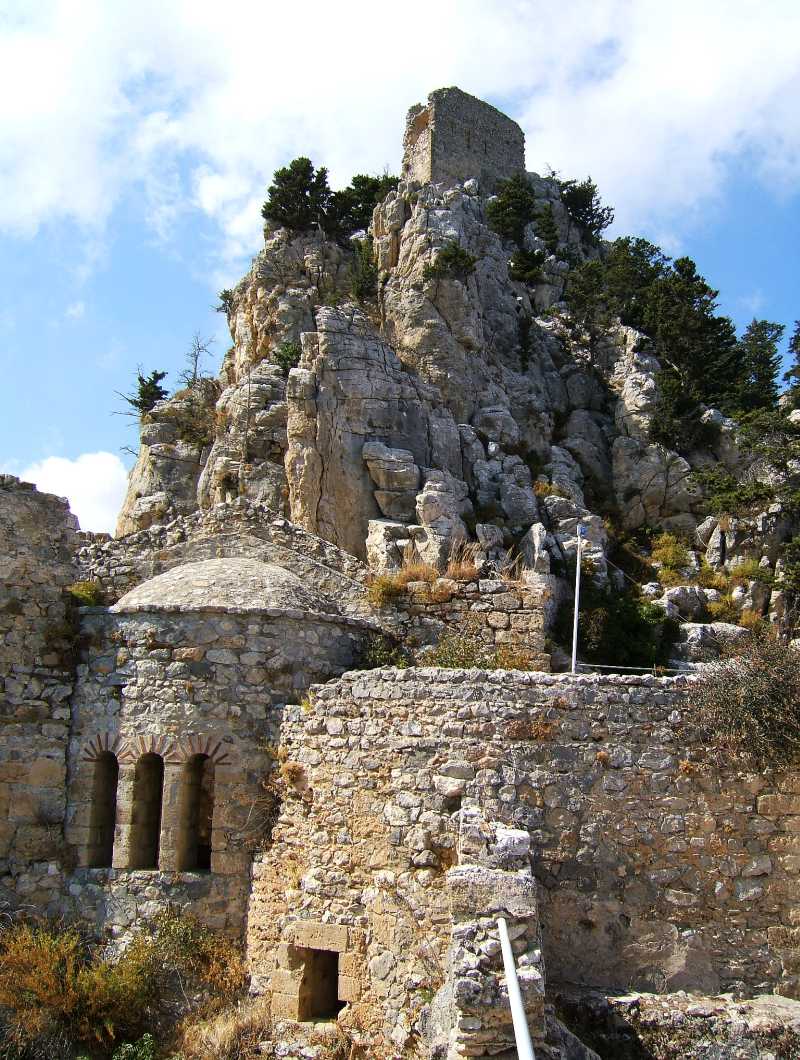
- Next comes Famagusta.
$updated from: St Hilarion.htxt Thu 27 Apr 2017 10:06:49 thomasl (By Thomas Lauer)$




